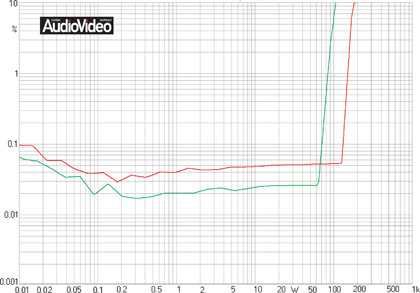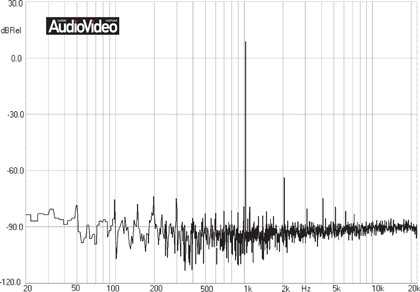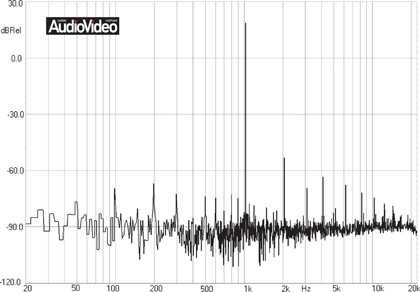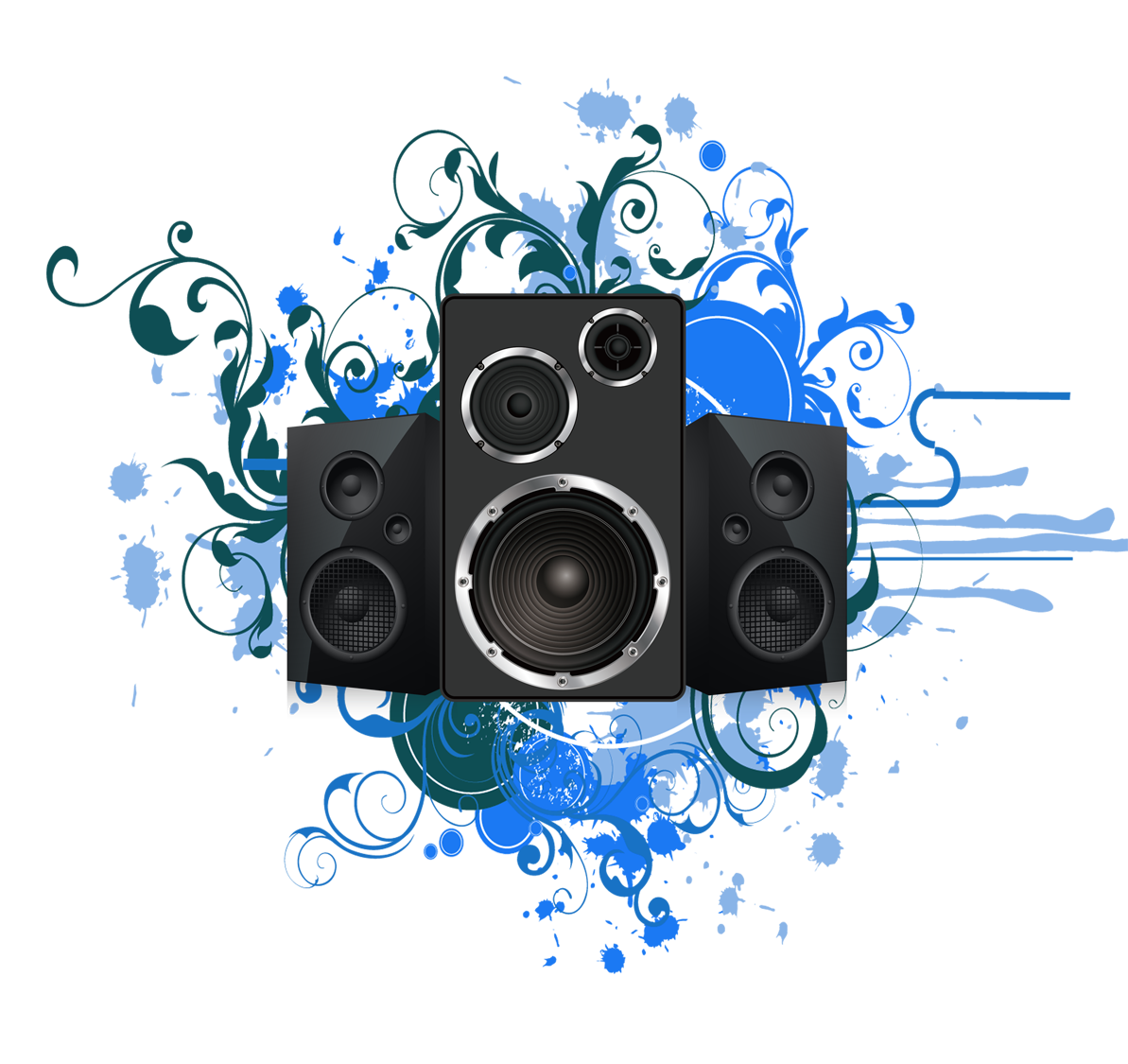заглянем внутрь
Rega Elicit-R
Первое, что бросается в глаза — огромный, не менее киловатта габаритной мощности, силовой тор. А вот сглаживающие конденсаторы довольно скромные, всего четыре штуки Samwa ёмкостью по 4700 мкФ. Возможно, разработчики решили обойтись необходимым минимумом, чтобы сделать усилитель более «быстрым».
Входы коммутируются с помощью реле, перед первым каскадом усиления установлены плёночные разделительные конденсаторы. Звуковой тракт предельно короткий, причём даже на выходе всего по два транзистора на канал. Это комплементарные дарлингтоны Sanken STD03P/N мощностью 160 Вт со встроенными диодами термокомпенсации. В каждом канале имеется собственное реле защиты. Теплоотводы очень серьёзные, а верхняя крышка представляет собой алюминиевую плиту толщиной 6 мм.
Rega Saturn-R
Производитель: Rega Research Ltd (Великобритания)
www.rega.co.uk
Проигрываемые диски и форматы: CD, mp3, WMA p Выходы: RCA, Coax, TOSLink p Входы: 2 Coax, 2 TOSLink, USB p Напряжение на линейном выходе: 2,18 В p Воспроизводимый диапазон: 17 — 20500 Гц p При неравномерности: -0,02 дБ p Гармонические искажения: 0,005% p Отношение сигнал/шум: 109 дБ p Габариты: 432 х 90 х 325 мм p Масса: 9,7 кг p Цена: 123880 руб.
Rega Elicit-R
Входы: 4 RCA, Phone/RCA, Power-In p Выходы: 2 RCA, Pre-Out p Выходная мощность: на нарузку 8 Ом — 2 х 105 Вт, на нарузку 6 Ом — 2 х 127 Вт, на нарузку 4 Ом — 2 х 162 Вт p Габариты: 432 х 82 х 340 мм p Масса: 13 кг p Цена: 123690 кг
КОМПОНЕНТЫ
- CD-проигрыватель Bryston BCD-1
- Интегральный усилитель Bryston B-100 SST
- Акустические системы Monitor Audio Gold
- Межблочные кабели RCA Musical Wire Cadence Signature
- Цифровой коаксиальный кабель Audioquest VDM-3
- Акустические кабели Kimber Kable 12TC
- Силовые кабели Physics Style PW-Reference
- Дистрибьютор питания Supra LoRad MD-06-EU Mk II/LoRad CS-EU 1,5
7 РАЗ ОТМЕРЬ

Зависимость КНИ от выходной мощности Rega Elicit-R
Обратите внимание, что величина искажений этого усилителя не зависит от отдаваемой мощности вплоть до 50 Вт на 8 Ом и 120 Вт на 4 Ом. Общий же коэффициент гармоник 0,02% в первом случае и 0,04% во втором
При уменьшении нагрузки вдвое максимальная выходная мощность возрастает с 85 до 170 Вт, т.е. ровно на 100%. Это, в первую очередь, заслуга мощного трансформатора питания, способного выдать большой ток без просадки напряжения. Тем не менее этот усилитель лучше споётся с высокоомной акустикой, пусть даже и не очень чувствительной — в этом случае искажения будут значительно ниже.

Спектр искажений Rega Elicit-R
при выходной мощности 4,5 Вт
Картина, всё чаще встречающаяся у британских усилителей — доминируют «благозвучные» чётные гармоники, в то время как нечётные заметно подавлены. Такой спектр характерен для однотактных усилителей. При небольшой мощности шлейф довольно короткий — составляющие выше 7-й теряются на фоне шумов. Звучание такого усилителя может показаться чересчур тёплым, а некоторые инструменты (в частности, деревянные духовые) будут выделяться из общего строя. При этом за чистый верхний диапазон и высокое разрешение можно ручаться.

Спектр искажений Rega Elicit-R
при выходной мощности 20 Вт
Несмотря на то, что КНИ этого усилителя не зависит от выходной мощности, спектр искажений при её изменении не остаётся постоянным. Соотношение чётных и нечётных гармоник то же, но на 20 Вт шлейф становится намного длиннее, вплоть до 15-й составляющей. Не исключено, что характер звучания усилителя будет меняться с изменением громкости.
поделиться
Sound Performance
Overall performance
When the left and right independent channel mode is selected, the performance of Airpulse A300Pro is fantastic. The sound density, transient, and level can be felt to improve significantly. In terms of sound style, it is closer to the exquisiteness and elegance of the Edifier Airpulse A100. And it is different from the unrestrained style of the A200 and A300. However, the “exquisiteness” shown by a large-size cabinet and high-power amplifier is far better than the A100. The sound transient detail quality of Airpulse A300Pro has been dramatically improved, no matter the small details and significant dynamics of music, it has achieved unprecedented control.
Treble Performance
Compared with A200 and A300, A300Pro’s treble dynamics have been significantly improved. At the same time, it can be felt that the signal-to-noise ratio of the power amplifier is indeed helpful to A300Pro. The treble details are more precise and richer.
The high frequencies of the A200 and A300 seem to be connected to the mid-bass unit. The consistency of sound and the control of the mid-to-high frequencies are inferior to the Edifier Airpulse A300 Pro and even slightly blurred. The A300Pro’s voice lines are exceptionally smooth. From mid to high frequency, silky smooth.
A300 Pro is not only good at performing excellent transient control, but also very accurate and extensive sound field. This kind of all-round improvement is not easy to quantify, but compared with A300 and A200, it is indeed a vast improvement. As a ribbon-style tweeter, the optimization trend of Airpulse A300 Pro tends to be more refined and delicate. What is impressive is the precise transient control of the violin playing, the appropriate sound density, and the rapid speed.
Midrange Performance
The mid-frequency of A300 Pro is also much improved, and the style has also undergone a relatively significant change. The calmness can also be felt where the sound is slight. When you need more volume, there may be more powerful than you expect. In the A200 and A300 periods, the intermediate frequency is somewhat fuzzy, and the control is not enough.
In terms of the human voice, A300 Pro makes the details of the sound in the mid-frequencies better, mainly due to the transient and fine details’ speed. The transient details are rich and do not procrastinate.
For great dynamic symphonies, the A300 Pro has plenty of power. The dynamic performance is very robust, and this robustness contains enough detail and level. Under very extreme loud sound pressure, even when dealing with a large room of 40-50 square meters, it shows reasonable control. That is difficult to do on the previous A200 and A300.
Bass performance
The low frequency of the A300Pro is relatively sensitive to the quality and style of the sound source. The resolution of the low frequency still has a significant advantage over the previous one. A300 Pro’s metal diaphragm speaker, up to a minimum of 40Hz. In actual listening, you can feel the shock. The A300Pro only performs at 120 watts of bass. For traditional active speakers to reach this level, 2-3 times the power may not be enough. In the middle and low-frequency parts, such as cello performance, A300Pro has fewer modifications than the previous AIRPULSE, with an exquisite and crisp sound, excellent stability, and outstanding resolution.
Sound Performance Summary
Compared with the previous AIRPULSE products, the sound performance of A300Pro is an all-round improvement. With ample power, a pair of 6.5-inch large-size woofers often brings not only the delicacy under stability but also the more gratifying ability to expand and release freely. With the A300Pro on the left and right independent channels, the sound density, especially the mid and high-frequency density, has improved significantly. The accuracy of sound control is much improved, and the low-frequency and mid-frequency transient performance are more delicate and precise.
Performance in Different Modes
The above performance is based on the A300Pro’s left and right independent channel mode. Let’s talk about the performance in the KleerNet wireless connection mode. With the same analog input and the same audio source, the dynamics of the mid and high frequencies in the A300Pro KleerNet wireless mode will be reduced. But even in this mode, the overall quality of A300Pro is still higher than that of A200 and A300.The Bluetooth performance is stable. While convenient, the A300Pro Bluetooth can also show the Bluetooth speakers’ high sound quality, and there are no shortcomings.
Driver Technology
In terms of the mid-bass woofer, although the appearance looks no different from the 6.5 inches above the Edifier Airpulse A300. However, Edifier said the driver had made improvements and adjustments to allow it to withstand higher output power and bring better performance. The overall structure of the speaker has not changed. It is still a cast aluminum frame system with a metal aluminum diaphragm. The use of short voice coil and long-stroke design makes the entire stroke voice coil consistent in the magnetic field. Such a design requires a higher cost in the magnet part, and the overall cost is relatively higher.
Gain \ Level
Gain (чувствительность) часто путают с громкостью, но это не совсем правильно.
Gain (гейн) — это регулировка входной чувствительности усилителя для согласования с магнитолой. Но не будем забираться в дебри и рассмотрим эту настройку с точки зрения полезной для пользователя.
Иногда значение Вольт (V) указанное на регуляторе может ввести в заблуждение. Дело в том, что чувствительность измеряется в Вольтах. Чем меньше V — тем выше чувствительность — тем громче будет играть динамик и наоборот.
Для начала будет полезно посмотреть понятое видео про то, как работает гейн на усилителе:
Настройка гейна на слух (1 способ)
Имея хорошее сабовое звено, не пользуйтесь эквалайзером и различными басовыми улучшайзерами, забудьте про bassboost на усилителе — поэтому перед настройкой гейна проверьте чтобы все это было отключено!
Установите регулятор на минимум и включите музыку, которую вы обычно слушаете. Прибавляйте громкость магнитолы на 3/4 от максимума, услышав искажения в звучании саба раньше — остановитесь и убавьте громкость на пару делений. Переходите к усилителю. Попросите помощника медленно прибавлять регулятор гейна до появления новых искажений, а услышав их, остановите вращение и убавьте на 10 %.
Настройка гейна на слух (2 способ)
Если вы не доверяете своему слуху и боитесь во время не услышать изменения, тогда воспользуйтесь более точным способом — с помощью синусов.
Если вы настраиваете сабвуфер, то используйте 40 Гц, в случае если ваш корпус настроен выше 40 Гц или у вас закрытый ящик, тогда берите 50 Гц, (). Для настройки гейна для усилителя мидбаса возьмите 315 Гц.
Синус или тон (в нашем случае) — тоновый сигнал определенной частоты, изменения в звучании которого вы легко услышите
Установите гейн на минимум, включите ваш синус и прибавляйте громкость магнитолы. При изменении звучания тонового сигнала остановитесь и убавьте на пару делений (выставьте ограничение максимальной громкости на это значение, если в вашей магнитоле есть такая функция). Переходите к усилителю. Аналогично первому способу прибавляйте гейн. При изменении звучания остановитесь и убавьте на 10%.
Настройка гейна с помощью мультиметра или осциллографа
Настройка уровня гейна с помощью приборов является грамотным и точным согласованием. При этом не напрягается ни динамик ни ваши уши. Подробно о такой настройке показано в видео на нашем Ютуб канале:
Обратите внимание, что при настройке с помощью мультиметра вы должны быть уверены в мощности, заявленной производителем усилителя
Лучшие мидбасы
Для того, чтобы определить, какие мидбасы будут являться лучшими именно для нас, неплохо было бы хотя бы вкратце упомянуть о том, что это вообще такое. В первую очередь мидбасовый динамик предназначен для того, чтобы воспроизводить тот диапазон частот, который сабвуфер воспроизводить уже не способен в силу особенностей своей конструкции и акустического оформления (среднестатистический сабвуфер легко воспроизводит частоты вплоть до 60 Гц, реже до 80 Гц), а СЧ динамик (если таковой, конечно, имеется) в силу опять же особенностей своих технических характеристик воспроизводить не способен априори
В любой системе мидбас играет огромную роль, ибо отсутствие диапазона частот 60-200 Гц напрочь лишает музыку драйва, «мяса» и напористости, делая музыкальные композиции сухими, скучными и лишенными бас гитары, бочек и прочих инструментов, звучащих в данном диапазоне (неспроста все музыканты уделяют особенное внимание именно мидбасовому диапазону)
Теперь, немного разобравшись с тем, что такое мидбас, нам осталось определить для себя критерии выбора. Мы не будем углубляться в параметры Тиля-Смолла динамиков, разговаривать о полной добротности и прочих вещах, объяснение которых заняло бы еще добрых 5-6 страниц, я предлагаю условно разделить выбор на два стандартных случая:
- В моей системе есть сабвуфер, я хочу подобрать себе мидбас. В таком случае, вам подойдёт большинство мидбасов ибо практически любой из них способен воспроизводить диапазон от 80 Гц (все, что до 80 Гц воспроизведет сабвуфер в ЗЯ). Безусловно, все динамики звучат по-разному и то, что нравится одному, может категорически не устроить другого, поэтому здесь придётся сравнивать только самому, особенно, если хочется добиться наилучшего для себя звучания. Если же нет желания тратить кучу денег и времени на поиски, то вполне можно выбрать то, на чём остановились десятки тысяч пользователей и приобрести проверенный временем и рекомендованный многими мидбас ак 74.
- В моей системе нет сабвуфера и я хочу, чтобы мидбас по максимуму перекрывал весь НЧ диапазон. Здесь задача обстоит сложнее. В данном случае нам необходимо искать не только динамик с низкой частотой основного резонанса (параметр называется Fs и должен находиться в диапазоне 35-45 Гц), но и при этом способный достойно справиться с мидбасовым и СЧ диапазоном (зачастую, снижение частоты основного резонанса именно к таким негативным последствиям и ведёт). Таких на рынке представлено крайне мало и одним из флагманов в данном сегменте является мидбасовая акустика Warhead.
Таким образом, лучшим мидбасом для каждого будет тот, который лучше всего подходит в конкретную систему под конкретные требования. Универсальных рецептов не бывает, но, тем не менее, данная статья поможет более точно определить, что нужно конкретно вам.
Sound
After the usual leisurely running-in period, we get the F501s positioned just so in our listening room.
It’s safe to say the thoughtful Fyne approach makes the speakers pretty forgiving of room position — but we find the F501s to be happiest out in some free space, and toed in just a fraction towards our listening position. In this, they’re no different to the majority of loudspeakers we listen to.
At this sort of money loudspeakers need to be able to turn their hands to any type of music without alarms — but we have to start somewhere, so we give the F501s the chance to show off their chops with Diana Krall’s version of .
This is a high-gloss hi-fi recording, with painstakingly recorded piano and close-mic’d vocal supported by stand-up bass, brushed drum kit and economical guitar — and the F501s absolutely lap it up.
MORE: Best speaker deals — hi-fi, Bluetooth, wireless
Initial impressions are of a broad, well defined sound stage, solid stereo focus and a lavish amount of detail. No nuance of Krall’s phrasing, no creak of double-bass fretboard, no lingering decay of a piano note is ignored.
But while they’re borderline-fanatical about laying out the last scrap of information, the F501s don’t sacrifice the coherence or unity of a performance in the process. Timing and integration are excellent, and the sympathetic responsiveness of the musicians is never understated or overlooked.
Upping the assertiveness quotient more than somewhat with a switch to by DJ Koze allows the F501s to show off their beautifully even, consistent tonality.
The speakers’ cleverly judged crossover points mean, from the bottom of the frequency range to the top, there’s no noticeable gear-change to the F501s’ delivery. This unified tonality, along with the sweet timing and transparency of their sound, makes the picture the Fyne Audios paint absolutely convincing.
MORE: Best hi-fi speakers 2018
Moving to the Deutsche Grammophon recording of by the Los Angeles Philharmonic under Leonard Bernstein not only allows the F501s to again demonstrate their fine grasp of timing (Bernstein takes the LAP through at an eccentric and awkward tempo, but the speakers have not a moment’s trouble tying it all together) but also their dynamic prowess.
Rhapsody in Blue is full of attention-seeking shifts from ruminative piano to full-orchestra outrage, and the F501s handle each with confidence. They snap into the leading edges of notes, alive with well-controlled drive and attack, and exit with similar alacrity. And they put significant distance between ‘very very quiet’ and ‘very loud indeed’.
No matter the sternness of the challenges we pose to these speakers, they prove unfazeable. Lotte Kestner’s shows the F501s can deliver all the character and emotion of a vocal performance;by Clark demonstrates low-frequency punch, speed and body; The Byrds’ amble through reveals top-end crispness and substance.
We’ll concede the F501s’ treble response is absolutely as confident and assertive as it can be without becoming hard or tiring.
A degree of system-matching is always necessary, but in this instance it’s imperative — the Fyne Audios’ top end isn’t impossible to provoke. Equally, while the thrilling rapidity of their low-frequency response might (on first acquaintance) be confused with a lack of extension, leaner electronics are probably best avoided.
And while we’re laying out our few caveats, we don’t think the F501s are all that tolerant of background-music levels of volume. They remain cogent and listenable to low volumes, but their vibrancy and excitement properly comes to the fore once the volume control nudges above ‘polite’.
But they’re such an enthralling listen once the wick is properly lit, we doubt you’ll want to hear them at background levels anyway.
Two Working Modes
Mode One
KleerNet wireless connection is used between the main speaker and the auxiliary speaker. At this time, the auxiliary speaker only needs an external power supply to work with the entire system. The audio source input is completed in the main speaker, which is on the right channel by default. Only in this mode, the remote control can work.
The KleerNet technology first appeared on the Edifier S3000, but the S3000 did not provide the secondary speaker’s analog signal input function. KleerNet’s technology was released by SMSC as early as 2012. The wireless transmission technology of the signal working in the 5G frequency band ensures multi-channel synchronization and lossless signal transmission. In actual use, there is no conflict with home 5G WiFi.
If you need to use S/Pdif digital input, Bluetooth input, USB input, you must use this KleerNet wireless mode. These modes are named “other input” on the back of the speaker, and the remote control does various switching.
Although the signal input part is divided into primary and auxiliary parts in this mode, the left and right parts of the power amplifier are equal and independent, and there is no difference. The wireless transmission is the digital signal after frequency division, not the analog signal of S1000 and A200 in wired transmission mode.
Mode Two
In this mode, the analog signal is divided into two speakers, which are precisely the same. Since the left channel of Edifier Airpulse A300Pro is different from the left channels of S1000, S2000MKII, A100, A200, etc., it has a built-in crossover & amplifier circuit, which is the same as in the right speaker.
Input Interface
The appearance style of A300Pro still maintains the design style of A300. The depth of the box is slightly more than 10mm, and the measurements are 225x385x350mm . The speaker also has a “main and auxiliary” design form by default, and the default main box is on the right. But it supports the input of analog audio signals for the left and right channels separately, so the left channel also has the same power input, frequency division, and amplifier circuit functions as the right main box. The main speaker also features USB input, S/Pdif coaxial or optical input, and Bluetooth input in KleerNet wireless mode.
It can be seen from the back input that the main speakers have one row more input interfaces than the sub speakers. At the top is a pair of RCA analog inputs, and at the bottom are S/Pdif coaxial RCA input, optical input, and USB-B interfaces.
The layout of the other input interfaces of the left and right speakers is the same. The uppermost part on the left is the volume knob, and the lower part is the RCA unbalanced input and XLR balanced input. The LED indicator is used to show the wireless connection status. There is also an OLED screen to display the volume level. When the speaker works in the left and right independent channel mode, that is, when the left and right speakers input signals separately, the speaker adjusts the input sensitivity of -30dB-+6dB. When working in the wireless connection mode, the volume is adjusted from 0 to 60.
The speaker also has a switch for balanced input, unbalanced input, and other inputs. Other inputs such as Bluetooth, USB, S/Pdif, etc. can be switched by remote control or master volume keys. There is a LED screen in front of the speaker to show the corresponding status.At the bottom are the gain adjustment knobs for high and low frequencies, with ±6dB for low frequencies and ±3dB for treble.
Conclusion
AIRPULSE A300Pro’s sound quality has improved significantly, and it can adequately perform in the left and right independent channel mode. Various input modes, the remote control can be used as an additional gift function. Compared with A200 and A300, the sound of A300Pro has improved all aspects. Abundant power support and a more refined tuning style make its overall performance different from Edifier’s early products. The music is smooth, the transient control is accurate, and the appropriate speed makes A300Pro significantly higher than A200, A300 by more than one grade. They are not on the same level.
Build and features
At 98cm tall, 20cm wide and 32cm deep, the F501s are of unremarkable dimensions for a product of this type.
And in terms of build quality and finish, they’re exactly what a £1200 floor stander needs to be — that’s to say they’re sturdily made, from the chunky locking spikes beneath the substantial plinth all the way along the gently curved MDF-beneath-real-wood-veneer cabinets.
Finish is smooth and seamless — the veneer feels as good as it looks, and the shiny silver band above the port system at the bottom of the cabinet is subtle rather than showy.
On a technical level, the F501s are an intriguing combination of the predictable and the unusual.
It’s the broad strokes that are pretty predictable: a two-and-a-half way design utilising a 25mm tweeter, 15cm mid-bass driver and 15cm bass driver, nominal impedance of 8 ohms and 90dB sensitivity won’t raise any eyebrows at this kind of money.
MORE: How to build the perfect speaker
But Fyne Audio has brought some interesting thinking to bear. The tweeter — a highly rigid titanium dome — sits in the throat of the mid-bass driver in an arrangement Fyne is calling IsoFlare.
This kind of point source design, intended to preserve the time-alignment and thus stereo imaging of the sound, is not unheard-of — but it demonstrates the sort of technical assurance start-up companies aren’t necessarily known for.
The bigger drivers are multifibre paper cones, with unusually sculpted surrounds. Fyne Audio calls this design FyneFlute, and claims it offers more efficient dissipation of cone energy and reduction of unwanted resonances as a consequence.
MORE: How to buy speakers and set them up for the best sound
And at the bottom of the cabinet Fyne has employed some technology so singular its patent is pending.
Called ‘BassTrax Tractrix Diffuser System’ (and we can’t help thinking Fyne Audio got just a little carried away there — try saying it fast and see how far you get), it combines a fairly conventional downward-firing port above a carefully profiled, conical diffuser.
This is designed to convert the standard plain-wave port energy into a 360-degree wave front. So the port’s response is dispersed more evenly and the speaker itself should, in theory, be less picky about its position in your room.
All of this low-frequency regulation takes place behind some slatted vents, which also add a little visual pizzaz to the otherwise necessarily predictable aesthetic.
The F501s’ grilles are, like many a rival design, held in place by magnets beneath the wood veneer.
Unlike many rivals, though, Fyne has considered what happens to the grilles once you’ve whipped them off — the rear of the cabinet has magnets too (as well as chunky biwiring speaker cable terminals), so the grilles can be safely and conveniently stored.
MORE: How to build the perfect hi-fi system


































